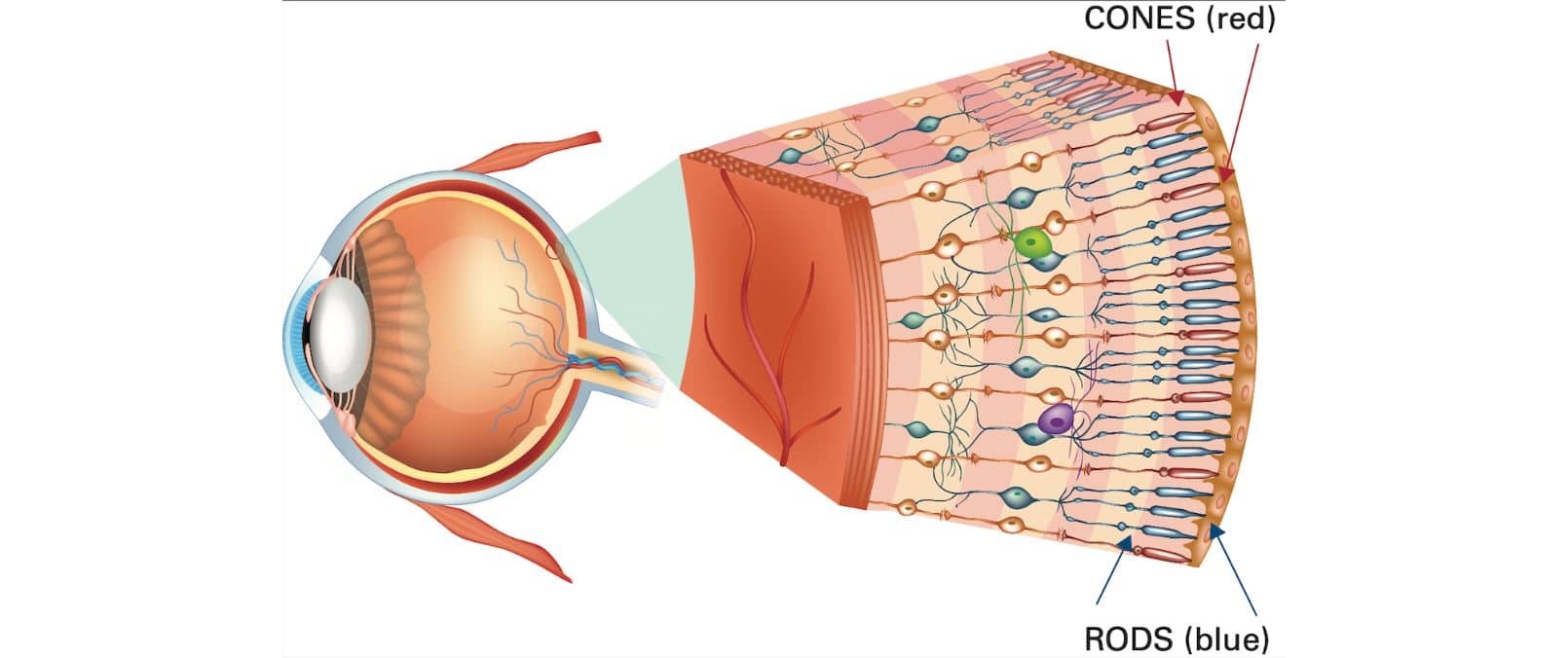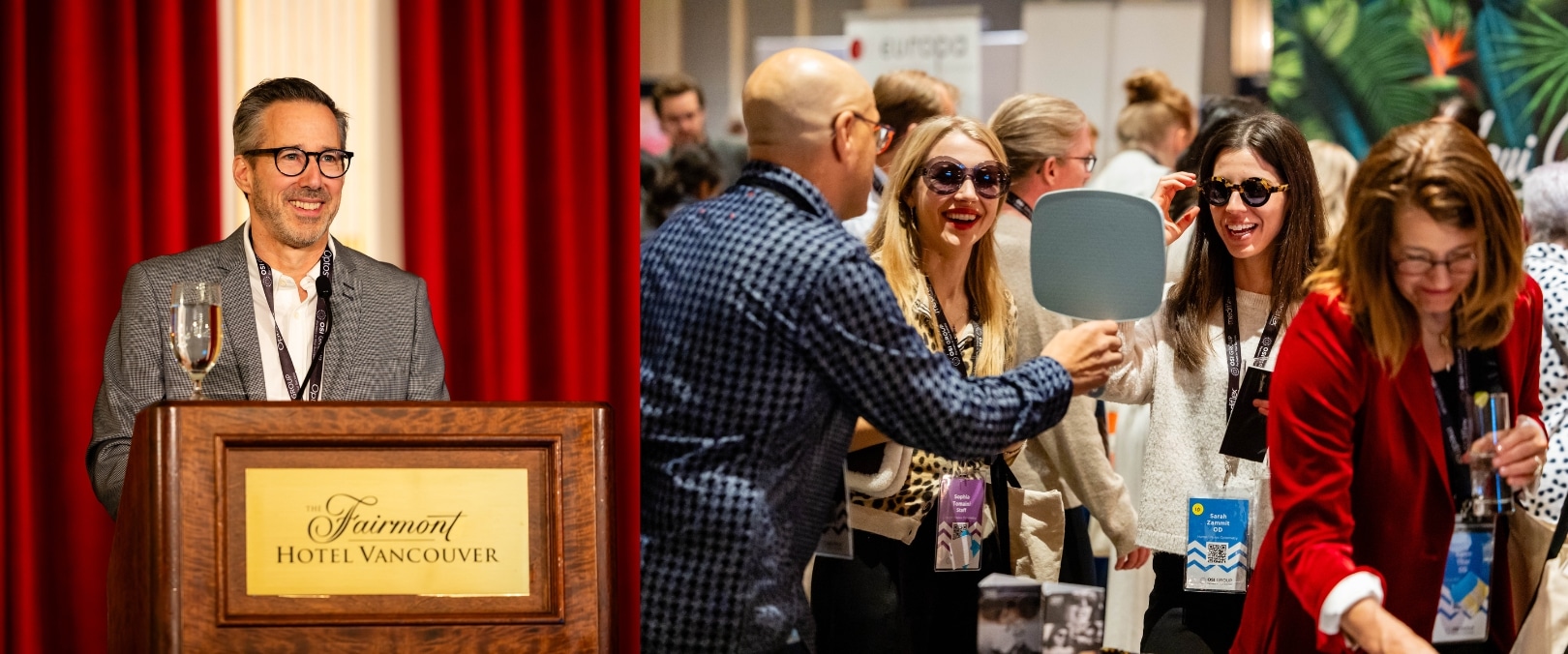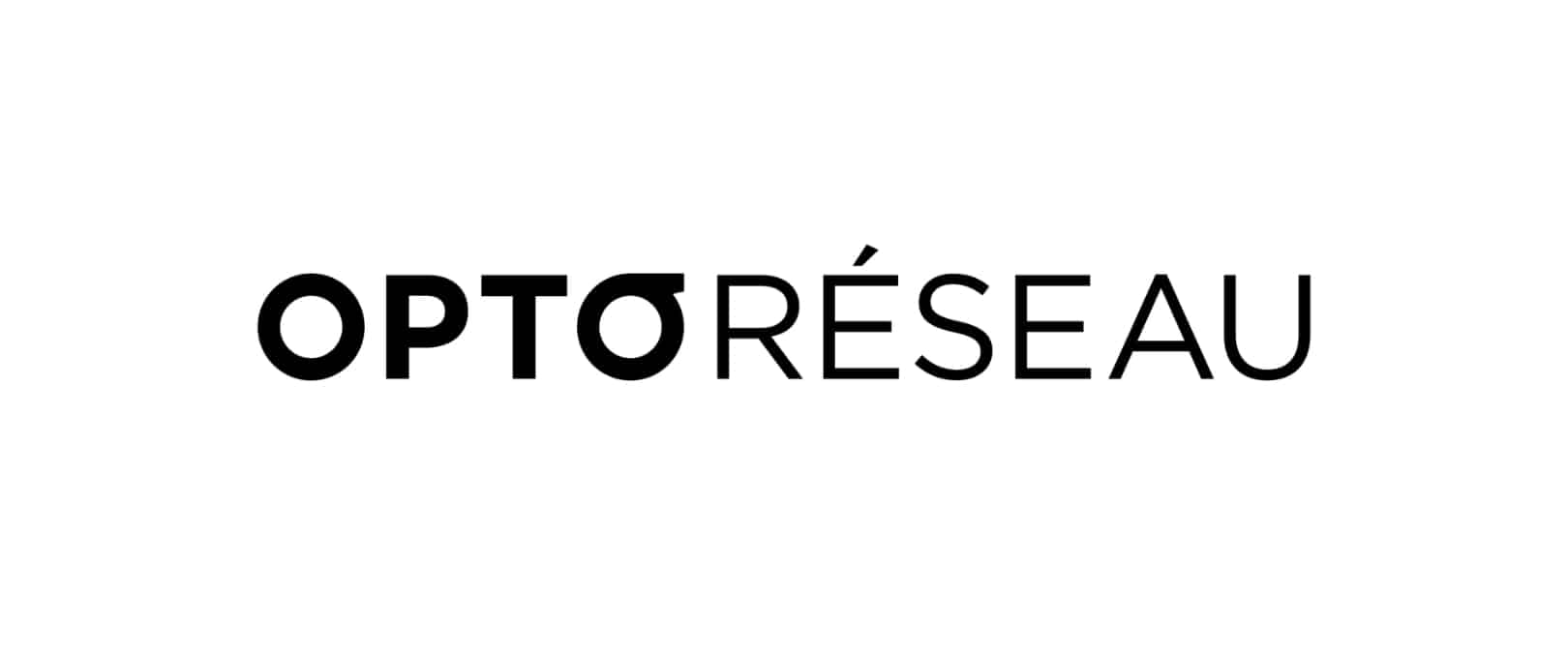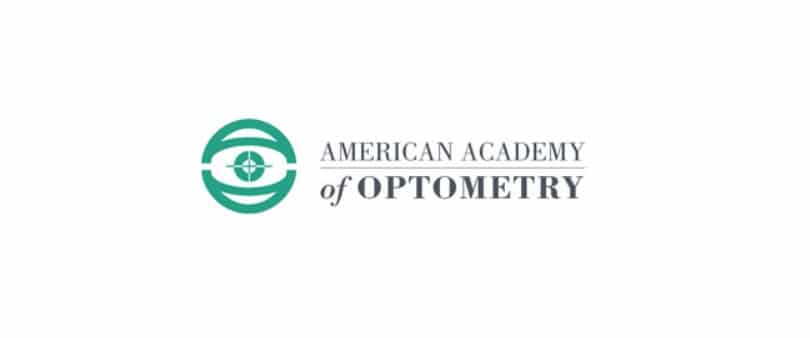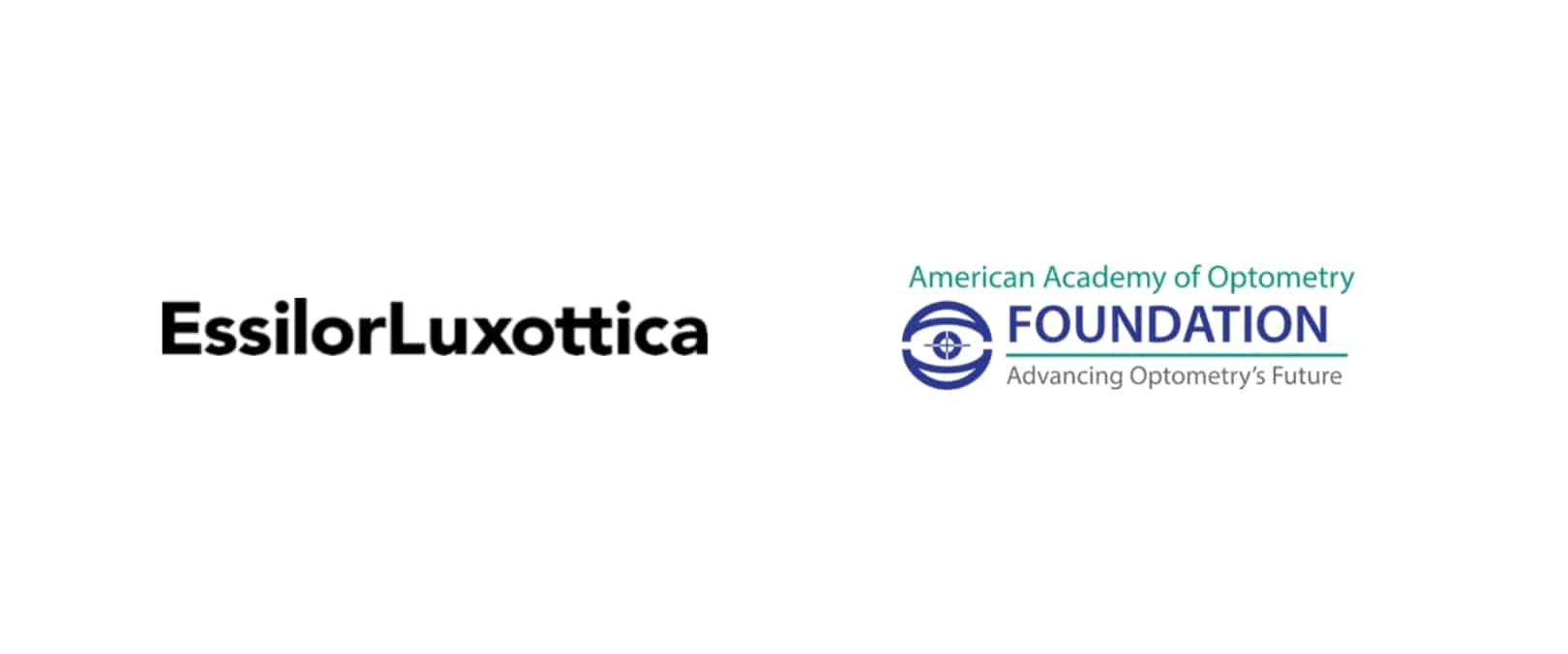ABCs of Optics: N is for Night Vision (part 2 of 3)
Friday, November 15 2024 | 08 h 55 min | Vision Science
This course is accredited for 1 EC for NACOR and 1 CL/EG/RF for COO.
NACOR #110.643 and COO #4250
Completion of online post-course test required at www.OptikConEd.com.
By Thomas Weissberger, RO
How Dark Adaptation Works
There are two parts composing dark adaptation; the first is that pupils dilate to allow more light into the eye as light is reduced; the second is the use of the Rod receptor cells in the retina. We should remember from our anatomy that Rod cells are exclusively responsible for (low light) night vision. Rods use a photopigment (a pigment that releases electrical energy when triggered by light striking it) called Rhodopsin for night vision.
What is Rhodopsin?
Rhodopsin is a protein found in the outer segment discs of rod cells. It mediates scotopic vision, which is monochromatic (black and white) vision in dim light. Rhodopsin most strongly absorbs green-blue light (~500 nm) and appears therefore reddish-purple, so it is also referred to as “visual purple”. It is much less sensitive to longer wavelengths of light such as red (visible) and infrared. Rhodopsin is a chromoprotein (sensitive to light). It is composed of two components: a protein molecule called scotopsin, part of a group of proteins made light-sensitive via a chromophore, and a cofactor (the chromophore called Retinal12). Retinal is a pigmented molecule derived from vitamin A aldehyde (sources of Vitamin A include deeply orange and red fruits and vegetables such as carrots, green and yellow peppers, cantaloupe, tomatoes, and yams).
How does Rhodopsin function in relation to dark adaptation?
When light hits the Rods, Rhodopsin bleaches (breaks down), “releasing” energy in the form of an electrical impulse which is then transmitted to our brains and converted into vision. For this to reoccur so that we may continue seeing, the Rhodopsin needs to regenerate, which happens over and over, but needs darkness to happen quickly and more efficiently in a process called “dark adaptation”, in which the eye adjusts to see in low light conditions. When light is detected at a low level for 20 minutes or so, the body starts producing rhodopsin in sufficient quantity to reduce the cycle time.
Because rod cells are insensitive to long wavelengths as discussed above, the use of red lights and red lensed glasses has become a common practice for accelerating dark adaptation. In order for dark adaptation to be significantly accelerated an individual should ideally begin this practice 30 minutes prior to entering a low luminescence setting (this is a factor in a scene we are all used to seeing in movies featuring submarines, where the captain and lookout stay in darkened areas illuminated only by a dim red light prior to the submarine surfacing at night, so that they may be able to see clearly right away when the go out).
Other Contributors to Dark Adaptation
Other factors effecting dark adaptation include the intensity and duration of pre-adapting light, and the size and position of the retina, as well as the wavelength distribution of the light used, as shown by the rod cells’ sensitivity to shorter wavelength light as well as the sensitivity of cones in the eye, both major contributors to dark adaptation. Above a certain luminance level (about 0.03 cd/m2), the cone mechanism is involved in mediating vision; called photopic vision. Below this level, the rod mechanism comes into play providing scotopic (night) vision as discussed.
The ability to see in low-light conditions tends to decline with age, primarily due to changes in the structure and function of the retina; this is a major but not often thought of issue when evaluating vision and visual defects and reduction in older individuals. Combined with the development of cataracts, AMD (age related macular degeneration), and other maladies such as Glaucoma which all reduce the quality of vision; low-light adaptation can have a negative impact on the safety and health of those individuals.
Impact on Daily Life:
- Driving at night with visual reduction
- Unfocussed vision,
- Reduction in visual field (sometimes unknown to the individual)
- Lack of scotopic vision (sometimes called night blindness or nyctalopia)
As ECPs this is an area of discussion and guidance that we can provide our wearers and sometimes their families to help improve their quality of life and ability to function both during the day and night. To do this, we must be able to both communicate with their doctors and determine the issues present and be able to offer solutions in eyewear that will help.
Simple Solutions for Low-Light Adaptation
Sometimes the best solutions are the simplest ones: Since prolonged exposure to bright light reduces dark adaptation; we can suggest ways of reducing exposure, such as sunglasses (yes, they really are not just an accessory or add-on) which help reduce the amount of perceived light entering the eye.
- We should always suggest UV protectant lenses, as the pupil will dilate behind dark lenses and therefore paradoxically let more light enter the eye, so the type of light must be controlled to reduce harmful rays.
- Another way to protect the eyes is with the use of wide-brimmed hats, which although not usually sold in optical dispensaries maybe should be (an interesting business building potential?) because of their protective nature.
- Avoiding sources such as reflections from snow, water, pavement, and car windshields is not always possible so protecting eyes using polarized lenses are highly recommended. Not only will the eyes be better protected but vision in activities such as driving, swimming, playing sports and even walking will be greatly improved.
Other lifestyle changes such as reducing time spent in direct bright light and staying under cover during peak hours will also work. Reminders to our customers that foods can play an important role in eye health should be encouraged. I say reminders as we cannot prescribe solutions, but certainly suggest research with the use of resource materials.
Want to see more like this article? Subscribe to our FREE print magazines and e-newsletters!
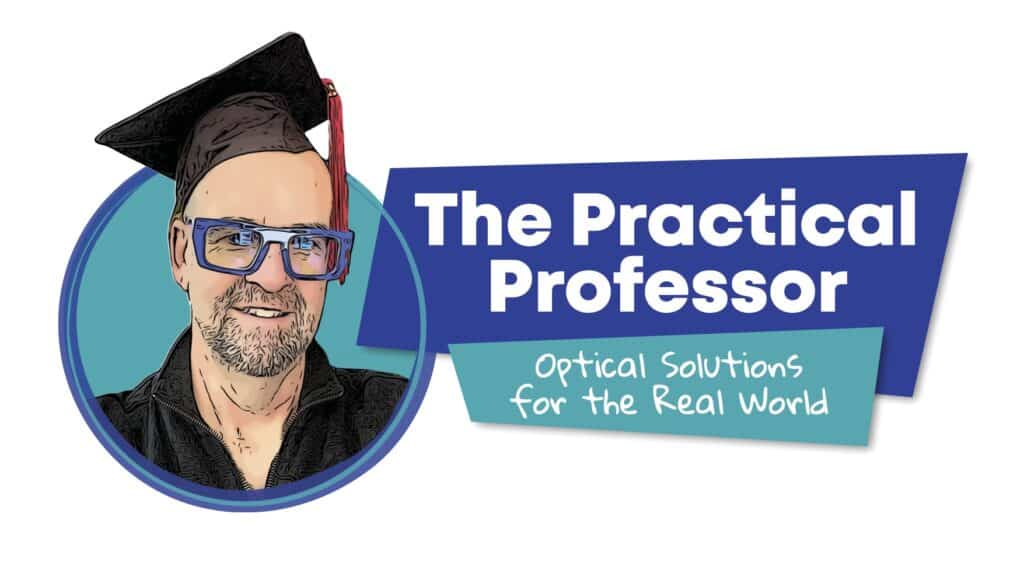
The Practical Professor: Optical Solutions for the Real World
I am a second generation optician and have made all aspects of opticianry and optics my life. I have over 10 years of teaching experience as a former professor in the Dispensing Opticians’ program at Seneca College and at Georgian College. I was also responsible for
modernization of the optical curriculum.
I am a trainer and trainee (One never stops learning!), and I am available to share my knowledge and experience with today’s eye care professionals. As the owner of Special Eyes Optical Services, I am dedicated to supporting the optical industry. You can reach out to me at Tom@SpecialeyesOpticalServices.com.

